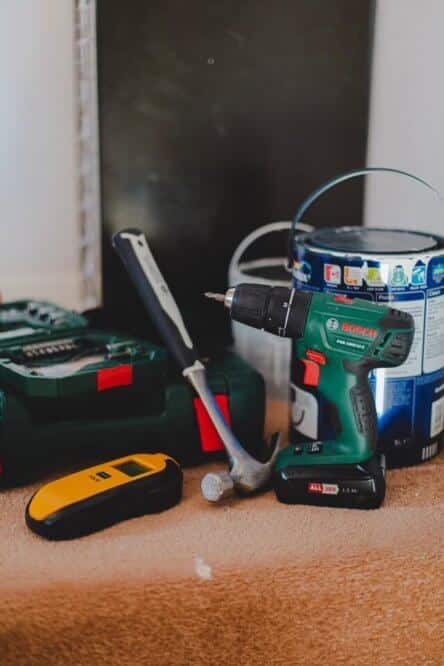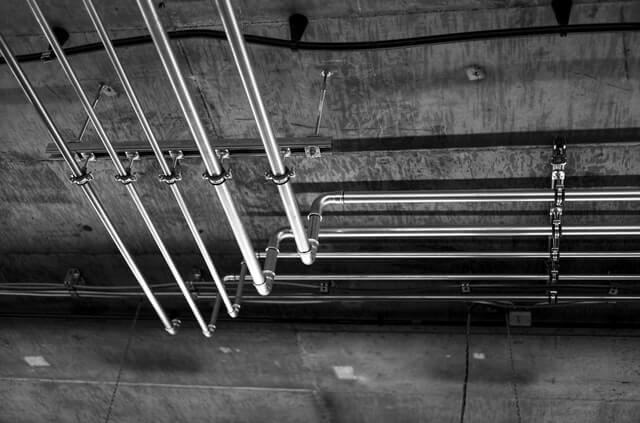You notice a water puddle underneath your sink and you run the water to see where the leak is coming from. The next thing you see is water sipping from the seal itself.
Your next step is to repair the leaky sink. There is more than one sealant for this job, but which one is better “Plumbers Putty vs Silicone”?
Plumbers Putty vs Silicone: Their Ingredients
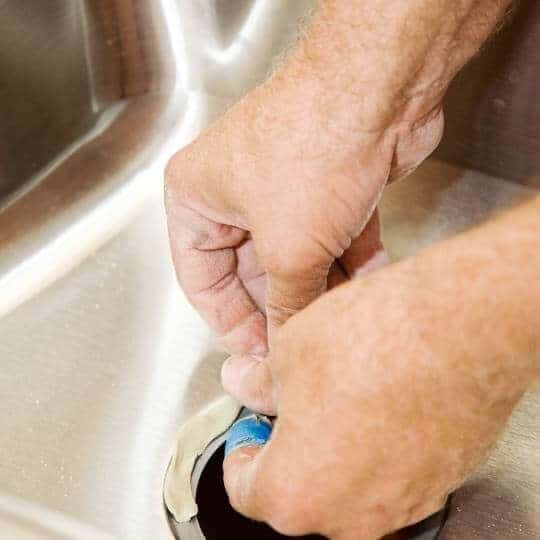
Both plumber’s putty and silicone caulk can be used to seal a sink drain. They both require little preparation, are generally very safe to use, and are must-have tools in most plumber’s toolboxes.
However, they are made from very different ingredients which affect the diversity of their use.
First, let’s break down the ingredients and uses of the plumber’s putty.
What is Plumbers Putty Made of?
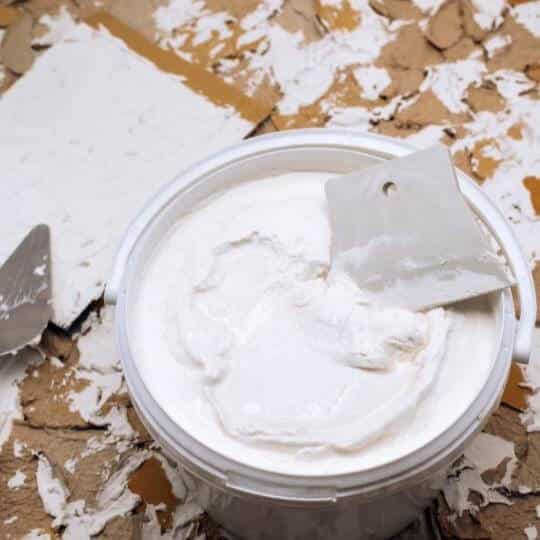
Plumber’s putty is a recognizable malleable clay-like substance most commonly used in the installation of plumbing fixtures. Those usually include the installation of faucets, sink drains, and pop-up drain fittings of tubs.
Although the formulation of plumber’s putty may vary, it is mostly made out of powdered clay and linseed oil. Other formulas may even include ingredients such as fish oil, limestone, or talc. [1]
Because it is petroleum-based, it can stain some porous materials. Some of them include granite, quartz, and sandstone.
The good news is – there is an oil-free putty available on the market, which does not leave any stains. Regardless, it’s always good to first read the instructions to find out which surfaces it is safe to use on.
Even without the sticky component, the plumber’s clay works perfectly in creating watertight seals. This is why putty is one of the most commonly used and trusted products among plumbers.
But like any other seal, it may deteriorate and create leaks over time. Since it’s not an adhesive, it’s easy to remove it and replace it with a new one.
Read on to find out how to clean old putty from the surface and apply a new one properly.
How to Use Plumbers Putty?

The plumber’s putty is applied on the undersides of the fittings and should not remain visible. This means it’s not supposed to be exposed to air, as this will dry the putty out and lead to cracks.
Bear in mind that plumber’s putty should not be used to prevent leaks from pipe joints. For this kind of situation, it’s best to use Teflon tape or thread sealant instead.
Now, follow these step-by-step instructions to remove old putty and safely seal the drain with the new one:
- First, determine if you should even use putty or some other sealant. Use the putty to seal sink drains, faucets, shower, and pop-up drains, and never on pressurized pipe joints.
- Secondly, notice if the material you’re working with requires a regular plumber’s putty or an oil-free one, to avoid making stains.
- Next, remove the old putty by scraping it off with the putty knife and wiping the excess off with soap and water.
- Take a ball of putty and rub it gently in-between your hands creating a snake-like shape.
- Make it long enough for it to fit around the edge. One longer chunk of putty works better than a few smaller ones.
- Gently put this snake-shaped putty around the edge you’re sealing.
- Now, put the item back in its place and press down. The excess putty should ooze out the edges.
- After tightening it, wipe off the visible excess of the putty.
After finishing the process, test out the created seal immediately by letting the water run in the sink. With a plumber’s putty seal, the fixture will be ready to use right after installation.
Plumbers Silicone: Plumbers Putty Alternative
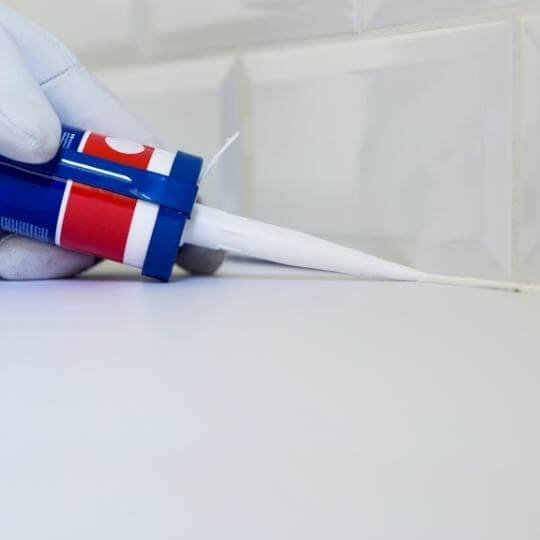
Unlike plumber’s putty, silicone sealant is made from a rubbery substance and is known for its superelasticity. Since it contains 100% silicone, its main advantage is its adaptability to changing temperatures.
In contrast to plumber’s putty, silicone sealant seals with more adhesiveness. Even though it creates a stronger seal, it’s not as easy to remove it as it is to remove the putty.
However, the silicone sealant does have many other pros:
- Extreme weather and water resistance
- Antimicrobial properties
- UV-light resistance
- Doesn’t crack
The supreme adaptability of silicone sealant to temperature changes allows for its versatility. Use it not only for bathroom and kitchen fixtures, but for HVAC applications, and surfaces like marble, porcelain, or fiberglass.
It stops the growth of mold because of its antimicrobial properties. This means you can easily use it on exterior installations where the sealant will come in contact with water.
Because of its UV-light resistance, a silicone sealant can be exposed to direct sunlight without breaking down or yellowing.
Last but not least, because of its inorganic substance and durability, it doesn’t crack.
All of these abilities of silicone glue make a perfect fit for fixing most bathroom applications. Among other uses, this makes it a perfect plumber’s putty alternative.
Can I Use Caulk Instead of Plumbers Putty?
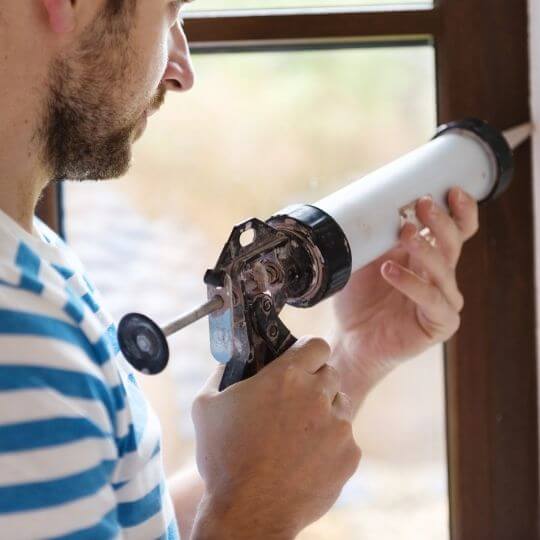
When discussing the alternatives to plumber’s putty, it’s important to note the difference between a sealant and caulk.
Although these terms can be used quite often interchangeably between plumbers, there is a difference. You should note that there are many types of silicone sealants available.
Generally speaking, silicone caulk is and can be used often instead of plumber’s putty.
However, not all silicone caulks are made of 100% silicone. Some of them contain acrylic latex, one of the most popular compounds on the market.
Note that acrylic latex-based sealants are not as water-resistant. Therefore, they are not the best fit for the fittings often exposed to water.
Some of the other characteristics of acrylic latex caulk include:
- Can be painted after it dries (in contrast to silicone sealant, which can’t be painted over)
- Easier to use (easy access to areas harder to reach with more time on hands to clean up)
- Can be cleaned up using just soap and water (whereas with silicone you have to use a chemical solvent)
That’s why it’s best to opt for the hybrid option – silicone sealants with acrylic latex caulk.
Hybrid caulks are manufactured for specific purposes. Therefore, it’s best to search for the 100% waterproof one when working on plumbing installations.
When deciding whether to use a plumber’s putty or silicone caulk (100% silicone or hybrid), it’s best to look out for:
- Water resistance
- Drying time
- Difficulty of application
- UV exposure
- Durability
- Price range
Have your caulk buying guide ready while looking out for characteristics that best fit your needs.
Keep in mind that it’s always good to be aware of the toxicity and odor of these products. Some silicone sealants may contain toxic elements, whereas putty is made out of organic elements and is therefore safe to use.
Now, let’s go through some of the frequently asked questions and answer them for you.
Plumbers Putty vs Silicone – FAQ
What are the main differences between plumber’s putty vs silicone?
Plumber’s putty is a clay-like substance used to seal around the edges of sink drains and faucets. Silicone caulk is an adhesive used as an alternative to putty or for sealing other surfaces like wood, glass, marble, etc.
Does plumber’s putty harden?
Plumber’s putty won’t harden and crack if applied properly, in other words – if not exposed to air.
Where to avoid putting a plumber’s putty?
Avoid using putty as a seal exposed to air, and never use it as a pipe joint sealant.
Where to avoid using silicone?
Use putty instead of silicone if you want the seal to be easily removed by hand if needed later. Don’t use silicone on surfaces you want to put paint on.
How long does it take for sealants to dry?
Silicone sealants can take from 24 to 72 hours to dry, whereas plumber’s putty doesn’t require drying time.

Michael Davis is a heating & plumbing expert who currently works as independent contractor in SC. He also writes for Plumbertip.
For almost 10 years he worked on various plumbing tasks across South Carolina.
